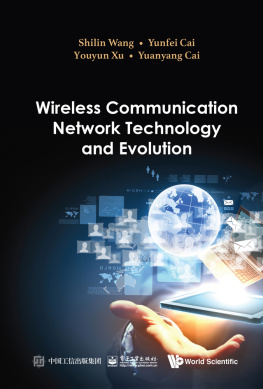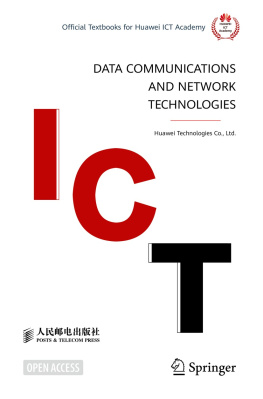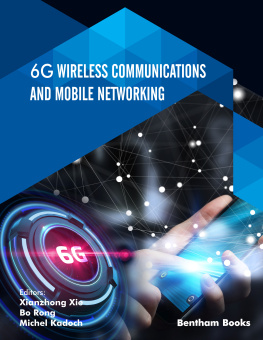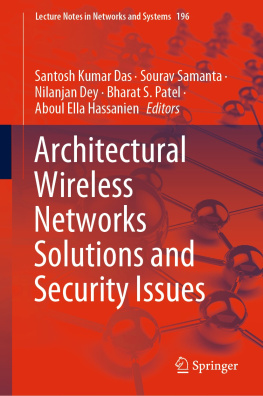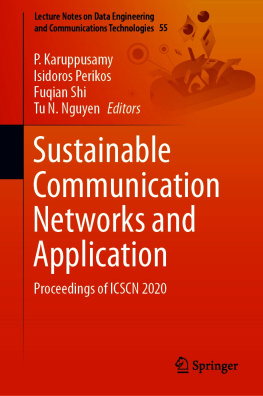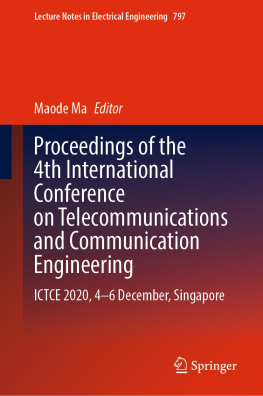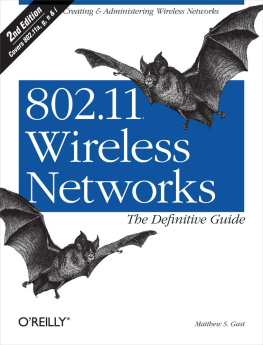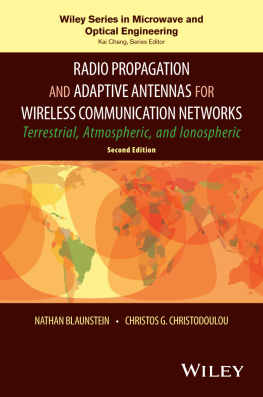Contents
Pagebreaks of the print version
Wireless Communication
Network Technology
and Evolution
Wireless Communication Network Technology and Evolution
Shilin Wang
Nanjing Institute of Communication Engineering, China
Yunfei Cai
Shenzhen TCL New Technology Co., Ltd, China
Youyun Xu
Nanjing University of Posts & Telecommunications, China
Yuanyang Cai
Purdue University Northwest, USA

Published by
World Scientific Publishing Co. Pte. Ltd.
5 Toh Tuck Link, Singapore 596224
USA office: 27 Warren Street, Suite 401-402, Hackensack, NJ 07601
UK office: 57 Shelton Street, Covent Garden, London WC2H 9HE
Library of Congress Cataloging-in-Publication Data
Names: Wang, Shilin, 1938 author. | Cai, Yunfei, author. | Xu, Y (Youyun), author. | Cai, Yuanyang, author.
Title: Wireless communication network technology and evolution / Shilin Wang, Nanjing Institute of Communication Engineering, China, Yunfei Cai, Shenzhen TCL New Technology Co., Ltd, China, Youyun Xu, Nanjing University of Posts & Telecommunications, China, Yuanyang Cai, Purdue University Northwest, USA.
Other titles: 880-01 Yi dong tong xin wang de yan jin. English
Description: Singapore ; Hackensack, NJ : World Scientific, [2022] | Originally published in Chinese by Publishing House of Electronics Industry Co., Ltd. | Includes bibliographical references and index.
Identifiers: LCCN 2021059120 | ISBN 9789811245053 (hardcover) | ISBN 9789811245060 (ebook for institutions) | ISBN 9789811245077 (ebook for individuals)
Subjects: LCSH: Mobile communication systems. | 5G mobile communication systems.
Classification: LCC TK5103.2 .W3684 2022 | DDC 621.382/12--dc23/eng/20220204
LC record available at https://lccn.loc.gov/2021059120
British Library Cataloguing-in-Publication Data
A catalogue record for this book is available from the British Library.
Originally published in Chinese by Publishing House of Electronics Industry Co., Ltd.
Copyright 2020 Publishing House of Electronics Industry Co., Ltd.
Copyright 2022 by World Scientific Publishing Co. Pte. Ltd.
All rights reserved. This book, or parts thereof, may not be reproduced in any form or by any means, electronic or mechanical, including photocopying, recording or any information storage and retrieval system now known or to be invented, without written permission from the publisher.
For photocopying of material in this volume, please pay a copying fee through the Copyright Clearance Center, Inc., 222 Rosewood Drive, Danvers, MA 01923, USA. In this case permission to photocopy is not required from the publisher.
For any available supplementary material, please visit
https://www.worldscientific.com/worldscibooks/10.1142/12496#t=suppl
Desk Editors: Vishnu Mohan/Steven Patt
Typeset by Stallion Press
Email:
Printed in Singapore
Foreword
by Pin Zhang
Wireless communication has become an indispensable basic method for the transmission and exchange of human language, text, pictures, images, data, symbols and other information. In the past 100 years, it has witnessed and promoted human progress and social development, and it will continue to play a role in information interaction in the process of human progress toward intelligent communication.
The invention and application of the telegraph in the mid-19th century fundamentally changed the way of mail delivery and remote information sharing for thousands of years. The continuous advancement of wireless communication technology in the 20th century had made radio broadcasting, fax and television widely popular. People sitting at home can know what major events are happening around the world, and they can listen and appreciate the songs and dances, customs and historical culture and arts from all parts of the world. Especially in the recent decades, with the integrated development of modern information and communication technologies (ICT) such as wireless communication and computer networks, the interconnection of people has achieved global roaming, always online, which can be described as thousands of miles in a flash and horizons within easy reach.
Behind the provision of this convenient service is the huge investment in ICT infrastructure and the continuous development of wireless communication network technology for decades, including cellular mobile communication networks, wireless local area networks, wireless sensor networks and the Internet of things. The communication network exists in the the form of a giant system and continues to explode. Therefore, whether as an individual or as a group, it is difficult for people to control this system alone or master all technologies by using ones own power. Then, how can a student or engineering technician in the ICT professional field with limited time and energy quickly understand the wireless communication network technology? In addition to the necessary professional basic training, it is essential for them to find a few comprehensive and professional technical books to read. This is exactly the purpose for which Professor Shilin Wang led the compilation of Wireless Communication Network Technology and Evolution.
Professor Wang and the other coauthors of this book have long been engaged in teaching and scientific research in related fields such as wireless communications and computer networks in universities. They also have rich experience in the design and product development of wireless mobile communications systems in the industry. Based on a large number of cutting-edge technical literature and academic books on wireless communication networks, they combined their own teachings and practical experiences, with full scanning and focused analysis, to explain the wireless communication network technologies past and present, design ideas, key points, application methods, evolution processes and reasons. The contents of this book mainly focus on cellular mobile communication, wireless local area network (Wi-Fi), and wireless Internet of things (NB-IoT, eMTC).
The beginning of this book goes straight to the technical topic without any deviations. Each chapter begins with a brief summary, and the narrative style of this teaching plan is reflected in the subsequent chapters. This is one of the key features of this book.
The authors of this book closely follow the trends of the world and systematically introduce the technical principles and evolution of cellular communication networks, wireless local area networks and the Internet of Things. The three network technologies are integrated, and both common technologies and individual technologies are written, so that readers can clearly recognize the similarities and differences of the three networks. There are not only basic principles and formulas but also technical analysis, intuitive illustrations and interpretations, as well as experiences and cases throughout the book, thus explaining the profound things in a simple way. I believe this book can bring readers a wealth of knowledge and enjoyment as well as a distinctive reading experience. This book is very useful for engineering and technical personnel and university students.
Ping Zhang
Academician of Chinese Academy of EngineeringProfessor of Beijing University of Posts and Telecommunications

